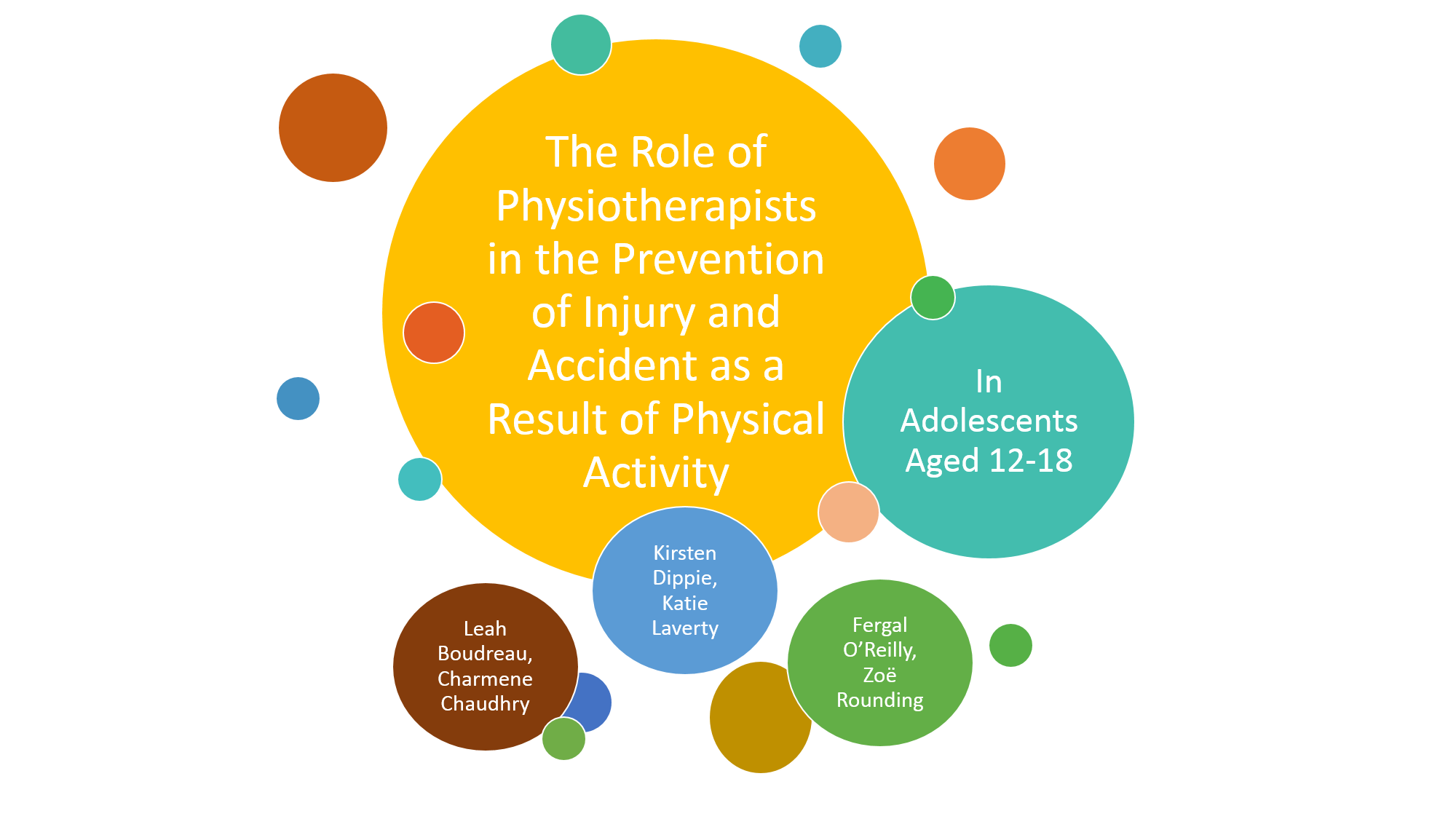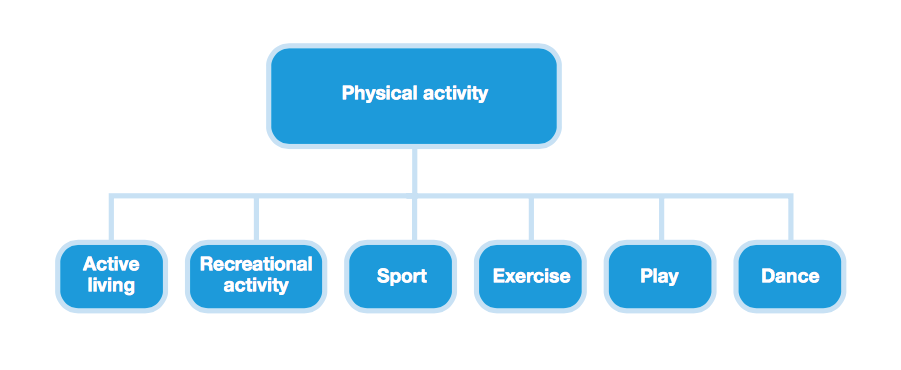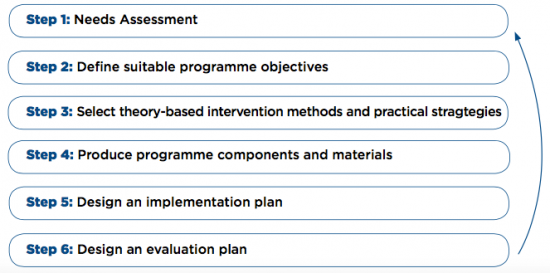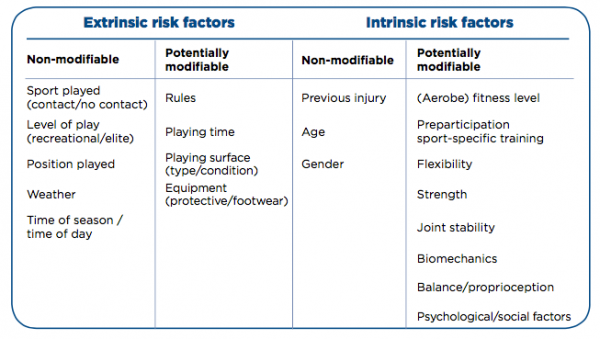Physical Activity and Injury Prevention in Adolescents
- Please do not edit unless you are involved in this project, but please come back in the near future to check out new information!!
- If you would like to get involved in this project and earn accreditation for your contributions, please get in touch!
Original Editor - Your name will be added here if you created the original content for this page.
Top Contributors - Charmene Chaudhry, Zoe Rounding, Chelsea Mclene, Kim Jackson, Ewa Jaraczewska, Simisola Ajeyalemi, Kirsten Dippie, Wanda van Niekerk, 127.0.0.1, Rachael Lowe, Katie Laverty, Leah Boudreau, Michelle Lee, Fergal O'Reilly and WikiSysop
Welcome to the Wiki[edit | edit source]
Introduction[edit | edit source]
Regular health benefits of participation in physical activity are well studied (Collard et al 2009). However, physical inactivity remains one of the largest worldwide threats and is the leading preventable cause of morbidity and mortality (NICE 2012). Since 1980, the prevalence of obesity worldwide has more than doubled in children and quadrupled in adolescents (McCormick et al 2007). In 2012, more than a third of children and adolescents were overweight or obese (CDC 2015). Physiotherapists are faced with an ever-growing challenge in efforts to promote physical activity in order for people to live a healthy life.
Physical activity has its drawbacks as well, there are risks of injuries and accidents of participants. Children and adolescents are the largest participants in physical activity and they are at a particular risk for these injuries, because of a high level of exposure, improper technique, poor proprioception, muscle weaknesses, apparatuses not adjusted to their size, absence of fear and understanding of risks (Collard et al 2009; Habelt et al 2011). Physical activity is the leading cause of injury and hospital room visits in adolescents (Brussoni et al 2015). Most injuries or accidents resulting from physical activity are non life threatening however they often result in pain, disability, school absence, absence from physical activity, and sometimes in dysfunction in the short and long term (Collard et al 2009). Injuries to joints can accelerate the development of osteoarthritis. Therefore, prevention of physical activity related injuries are essential. Emery (2005) showed in a review that injury prevention strategies in children could reduce the risk of physical activity related injuries.
Physiotherapists have an extremely important role in the prevention of injuries and accidents as a result of physical activity in adolescents so they can continue to enjoy the physical, social and emotional benefits of activities without compromising their safety. Therefore the aim of this Wiki is critically evaluate the role of the physiotherapist in the prevention of injury and accident as a result of physical activity in adolescents age 12-18.
This is Reflective Ralph. He will accompany you through this Wiki resource, and help guide your learning by posing questions you are encouraged to think about.
Physical Activity and Health[edit | edit source]
WHO (2016) define physical activity as “any bodily movement produced by skeletal muscles that requires energy expenditure.” This broad definition entails that there are various ways in order to be physically active such as: play, sport, walking, cycling, housework and gardening.
Regular physical activity is known to have many health benefits including:
- Reduce risk of cardiovascular disease
- Reduce risk of type II diabetes
- Reduce risk of certain types of cancers
- Reduce blood pressure
- Improve mental health and wellbeing
- Improve social and moral development
- Improve ability of academic achievements – i.e. ability to concentrate and better classroom discipline
- Contribute to healthy weight maintenance (WHO 2016)
WHO (2016) recommends for children and adolescents to accumulate at least one hour of moderate activity on most days of the week. Three days per week high intensity physical activities should be incorporated. All children and young people should minimise the amount of time being sedentary for extended periods of time.
List three reasons why prevention of injury and accident as a result of physical activity in adolescents is important.
Role of the Physiotherapist[edit | edit source]
The Chartered Society of Physiotherapy (CSP, 2011) define physiotherapy as "a healthcare profession that works with people to identify and maximize their ability to move and function" (p. 4). Physiotherapy helps people of all ages to prevent, manage and rehabilitate injury, illness or disability through education, advice, exercise and manual therapy. It is important to possess the skills required for working within these in demand services.
The Knowledge and Skills Framework – can someone help me with this part.. I don’t get it. She had said to relate to this however I am unsure what to include.
A physiotherapist can develop an injury prevention programme through the use of intervention mapping (IM) protocol. This involves a systematic process that prescribes a series of six steps in order to develop theories and evidence based health promotion programmes (Figure 2) (Collard et al 2009). This six-step process can aid physiotherapists in the development of various prevention programmes such as the prevention of injury and accidents in adolescents age 12-18 as a result of physical activity.
For an example of this IM protocol used, please read the following article available in the References section: Design of iplay study: systematic development of a physical activity injury prevention program for primary school children. (Collard et al 2009)
Risk factors are generally the leading guide for preventative measures in physical activity (Collard et al 2009). These risk factors can increase the risk of an injury or accident as a result of physical activity in adolescents age 12-18 and can include both extrinsic and intrinsic factors. Injuries and accidents can also be caused by a combination of these factors. It is important for physiotherapists to identify these risk factors in order to aid in prevention.
Demands on Health Care Services[edit | edit source]
Health benefits of physical activity are extremely important however physical activity also exposes the participant to a risk of injury or accident. Physical activity such as sport and recreation, cycling, skateboarding and playground use is the most common reason for Australian youth aged 0-16 to be in an emergency department and 14% of these presenting injuries require hospitalisation. (Spinks et al 2006). Similar results have been found worldwide in countries such as Norway, France, New Zealand and the United States (Collard et al 2009).
Not only do injuries and accidents related to physical activity affect healthcare services, they also affect school and work time. A study conducted in the Netherlands showed that school absence occurs in 7% of children and adolescents who sustained a sport injury, and the means duration of school missed by these children was 8 days (Collard et al 2009). This means that 0.02% of the total population who visit school and participate in physical activity are absent from school one or more days. With a mean duration of 8 days, the total absence due to sports injuries can be calculated at 794,000 days a year. In addition, 22% of people who sustained an injury were also absent from physical activities. The economic consequences of physical activity-related injuries in adolescents are not known, but direct medical costs were estimated at 170 million euros and indirect costs i.e. school or work absence was estimated at 420 million euros.
These preventable injuries increase the wait time for persons to see a physiotherapist. In the NHS the average wait time to see a physiotherapist in a musculoskeletal outpatient department is approximately six to eight weeks. Therefore if a plan is put in place to prevent these injuries less persons would require rehabilitation from a physiotherapist. Overall, the safety can be improved in many of these activities so that participants are able to continue to enjoy them without their safety being compromised.
Relevant Definitions[edit | edit source]
Prevention, injury, accident, adolescents and physical activity
Important Information[edit | edit source]
Aims of this Wiki[edit | edit source]
Learning Outcomes[edit | edit source]
By the end of this resource, the learner will be able:
1. To critically evaluate prevention and prevention strategies of injury and accidents in adolescents age 12-18 participating in physical activity in the context of physiotherapy practice.
2. To be able to critically evaluate the level of effectiveness of preventative equipment and education in prevention of injuries and accidents in adolescents age 12-18.
3. To be able to justify a prehabilitation programme and promote each component in the prevention of injuries and accidents in adolescents age 12-18.
4. To be able to critically reflect upon the challenges and be able to make recommendations that can be implemented to prevent injuries and accidents in adolescents age 12-18 during physical activity.
Intended Audience[edit | edit source]
The following resource is designed for students and recently qualified physiotherapists, looking to enhance their continual professional development, in regards to the prevention of injuries and accidents in adolescents age 12-18. This resource however is not to be exclusive to these groups as other individuals interested in this topic area may be able to extract relevant information as well.
Current Legislation[edit | edit source]
Concussion Return to Play Protocol[edit | edit source]
Helmet Laws[edit | edit source]
Aftermath[edit | edit source]
Physiotherapist's Having a Place at the Table[edit | edit source]
Types of Preventative Equipment[edit | edit source]
Individual Sports[edit | edit source]
Evidence and Efficacy Studies of Preventative Equipment[edit | edit source]
Physiotherapist Advice[edit | edit source]
Prehabilitation[edit | edit source]
Warm Up[edit | edit source]
S&C[edit | edit source]
SAQ[edit | edit source]
Pre season Testing[edit | edit source]
Cool down/stretches[edit | edit source]
Past injuries
[edit | edit source]
Education[edit | edit source]
Hydration[edit | edit source]
Nutrition
[edit | edit source]
Skill acquisition
[edit | edit source]
Posture
[edit | edit source]
Conditions/environment
[edit | edit source]
Rest
[edit | edit source]
Gradual progress
[edit | edit source]
Respect pain[edit | edit source]
Scenarios[edit | edit source]
Case Studies[edit | edit source]
Conclusion and Summary[edit | edit source]
Recent Related Research (from Pubmed)[edit | edit source]
Extension:RSS -- Error: Not a valid URL: Feed goes here!!|charset=UTF-8|short|max=10
References[edit | edit source]
References will automatically be added here, see adding references tutorial.











